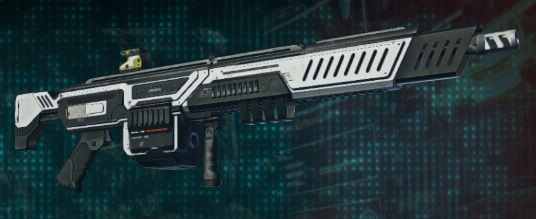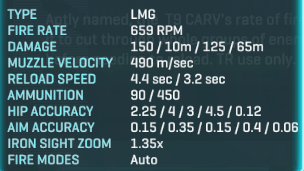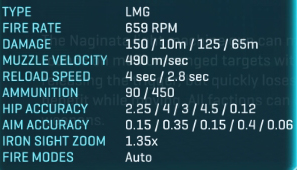This article is based on the guide written by Davregis, originally posted on reddit.
Intro
Using a sniper-style weapon in CQC, like every other gun in the game, takes a boatload of positioning and aim.
You don’t necessarily have to score headshots all the time, it’s possible to bodyshot your way to an auraxium pretty darn quickly with a CQC SASR, as long as you get a feel for what you can and can’t do with the weapon
But there are better guns out there if you want to dedicate. So let’s start from hardest to easiest weapons to use.
Choosing your weapon
Close Range Bolt Action
TSAR-42, SAS-R, Ghost
-
Recommended scope: 4x
-
Difficulty: pls no
CQC bolt is pretty simple in theory, because all you need is 1 headshot per target. You cloak in a reasonably safe spot, WHILE CLOAKED aim at someone you can headshot, decloak, fire, then either recloak and reaim, or chamber another round and try to grab somebody else.
The bolts instagib with a single headshot, making them extremely powerful, but you lose automatically if you miss your first shot and someone is shooting at you.
That being said, remember your weapon does 700 damage at 10m and falls off pretty slowly. I recommend the Target Focus implant which displays a healthbar above spotted enemies. If they look like they might have less than 650 health, take the bodyshot and pat yourself on the back.
And if you’re close enough, 1 shot + quick knife swing will let you instakill almost any non-HA target.
CQC bolt is the hardest to use because you have an effective 47 rpm and a TTK of three hours. You can get away with double bodyshot kills, but that takes more than a full second to kill, won’t kill shielded heavies, and will never let you survive an encounter less than 50m away if you miss that first shot.
I would not use these weapons unless you’re extremely confident in your skills. However, once you are very good, CQC bolts are probably the best choice, being able to instakill with one shot. This is the stuff montages are made of.
Semi Auto Scout Rifles
Vandal, HSR-1, Shadow, Nyx
-
Recommended scope: 2x or 3.4x
-
Difficulty: headshot god
Scouts are close to CQC SASR, but have faster ROF and maintain accuracy while moving, in exchange for less damage.
You get guaranteed 2 headshot kill at all ranges (3 vs shielded heavies), or a four bodyshot kill after 15m, and sometimes at 15m too. What this means is that to use the weapon better than a CQC SASR, you need to be firing while moving, and maintaining a ludicrous headshot ratio. As soon as you miss a headshot, your TTK increases past a SASR’s.
In this way they’re a middle ground between bolts and SASRs. They have ROF like a SASR, but horrible bodyshot TTK like a BASR. Some people love these things, but I honestly think they’re worse than bolts for people who headshot consistently, and worse than SASRs for people who can’t.
They excel over a BASR when you chain 4+ headshots in a row to kill multiple people in a single clip faster than a bolt could, and excel over a SASR when you can reliably take advantage of the larger clip size, refire rate, and ADS move accuracy by chaining headshots until the clip is empty.
Their lower bullet damage means they’re much harder to do well with than a SASR, but also end up slightly better once you can pull this stuff off.
Semi Auto Sniper Rifles
KSR-35, Impetus, Phantom
- Recommended scope: 3.4x
- Difficulty: you can pretend it’s a shotgun if you want
CQC SASR is your easiest sniper rifle to use. Featuring a 3 hit bodyshot kill until 6x+ scope ranges and 1 headshot + 1 bodyshot kill at the same ranges, your CQC SASR is extremely tolerant to user error.
Because of its 400 damage and moderate firerate + hipfire CoF, it functions extremely well as a hipfire shotgun whenever the opportunity presents itself. Shoot 3 times, or shoot twice + knife for a quick, disgusting CQC kill. Hip fire range extends to about 8 meters, after that scoping in and slamming the trigger is more accurate.
Although you have to stand still with these things to maintain your accuracy, you can fire an entire clip reasonably quickly(but slower than a scout’s), and you have a lot of room to mess up due to quick reload.
Unlike a scout, you can mix headshots and bodyshots very well, and bodyshot only TTK, while high, is pretty forgiving compared to a bolt’s or scout’s. Honestly, this thing is so much better than a scout or bolt for everyone but the gods of planetside sniping. That being said, it’s also probably the worst gun for someone who’s amazing at clicking heads. Try to transition off this gun once you’re comfortable with it, if possible.
MINDSET
Pick your weapon, they all play reasonably similarly. Ideally, you want to have cover or a flank on an enemy position while still pretty near to your allies. Cloak, target, uncloak, try to kill someone, and gauge response to your shooting.
Above all, never stand still except while shooting, and never kill from the same place twice.
Here’s a general example of how I play these weapons.
- Find a spot with okay cover(usually a dirt pile or base wall)
- Run to it cloaked or uncloaked depending on enemy line of sight.
- Cloak and ADS, seeing if I find a target.
- If I find a target, I squeeze off 4-5 shots then recloak and move a few feet around.
- If I get an enemy response, I either wait a bit or relocate, depending on strength of response.
- If I start getting a continued response, I move a good distance away, because I’m almost definitely being hunted.
- Repeat. If I get close enough to someone, I might shotgun them.
Ideal spots for these weapons are areas where you have lots of cover and the enemy is out in the open. Don’t try to run these guys inside of a base; that’s when you want an actual shotgun or SMG.
Knowing when to use a rifle is the difference between 4kpm/5kda and 0.5kpm/0.5kda, and you’ll learn this pretty quickly regardless. Biolab defenses, tower defenses (see a theme?), and HIVE combat tend to work really well for these things. Only take on opponents you know you can with your skill level, or people that look low enough for you to kill with 1-2 bodyshots or a headshot.
Lastly, a point to keep if you keep anything from this guide: KNOW WHEN TO MOVE.
If you stay still, or with no cover, you’re gonna die from some spawnroom hero halfway across the map with a 100 k/d and 0.01 kpm, or some HA who’s been walking to you for half his game session. Eventually you’ll know how many shots you can squeeze off before having to cloak and relocate; getting there is a huge part of the journey.



